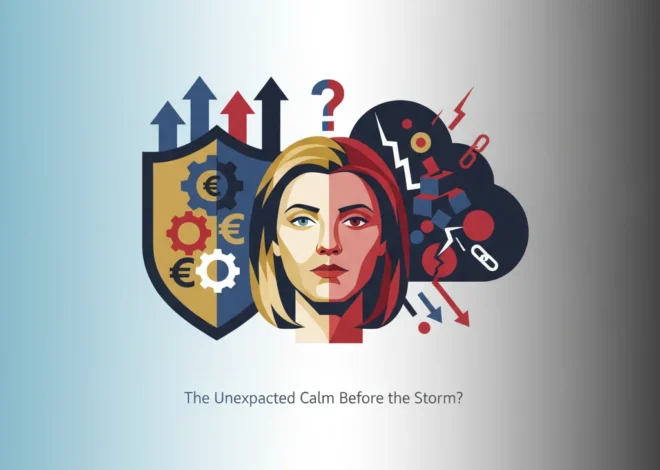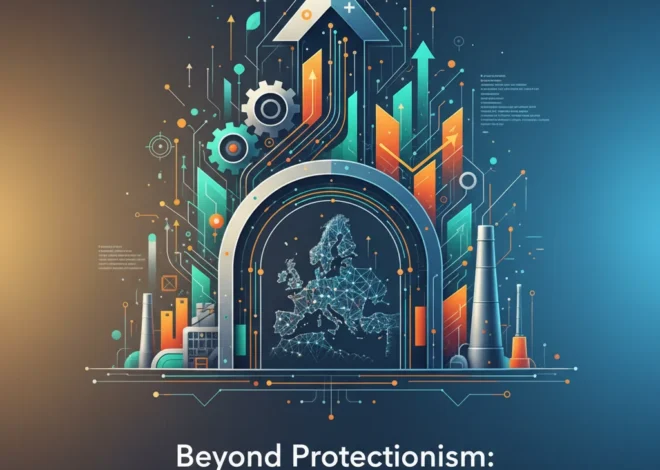
From Belfast to Wall Street: Why Confronting the Past is the Future of Finance
In a recent letter to the Financial Times, a group of signatories including Aldwin Wight made a powerful plea for more candour regarding the legacy of “The Troubles” in Northern Ireland. They argue that a “mature and prosperous society” cannot be built on a foundation of silence and unacknowledged history. The core message is clear: to secure a stable future, we must honestly confront the complexities of the past. While their focus was geopolitical, the principle resonates with profound importance in the world of finance, investing, and global economics.
The financial markets, much like post-conflict societies, are haunted by their own ghosts. The spectres of market crashes, corporate scandals, and regulatory failures loom large, shaping investor sentiment and influencing economic policy for decades. Just as a fragile peace requires truth and reconciliation, a resilient financial system demands a transparent and unflinching examination of its past mistakes. Ignoring them, or pretending they were mere aberrations, is a recipe for repeating them. This journey from historical amnesia to active accountability is the single most critical challenge facing modern banking, fintech, and the entire architecture of our global economy.
The High Cost of Corporate Amnesia: When Silence Bankrupts
History is littered with the corporate carcasses of companies that chose opacity over honesty. These are not just business failures; they are profound breaches of trust that ripple through the stock market and impact the lives of employees, investors, and communities. Consider the case of Wirecard, the German payments processor that was once the darling of the European fintech scene. For years, it projected an image of spectacular growth, only to collapse in 2020 after admitting that €1.9 billion in cash on its balance sheet likely never existed (source). The failure was not a sudden event; it was the culmination of years of ignored warnings, regulatory shortcomings, and a corporate culture that punished dissent and prioritized secrecy.
Similarly, the Wells Fargo account fraud scandal, where employees opened millions of fraudulent accounts to meet aggressive sales targets, was a direct result of a toxic internal culture that was left unaddressed for years. The financial cost was measured in billions of dollars in fines, but the reputational damage—the erosion of trust with the public—was immeasurable. These corporate “troubles” demonstrate a critical lesson: a lack of internal candour is a leading indicator of systemic risk. When a company cannot be honest with itself, it cannot be honest with its investors or the market.
60,000 Mortgages at Risk: The Unintended Consequence of a UK Savings Overhaul
Ghosts of the Great Financial Crisis: A Legacy of Mistrust
On a macro scale, the 2008 global financial crisis serves as the defining “Troubles” of our modern economic era. It wasn’t just a failure of complex financial instruments like collateralized debt obligations; it was a colossal failure of transparency, ethics, and accountability across the entire banking industry. The aftermath was not just a severe recession but a deep and lasting schism in the public’s trust in financial institutions. A 2022 survey by Edelman found that financial services remain the least trusted sector globally (source), a direct legacy of the 2008 meltdown.
The parallels to a post-conflict situation are striking. The crisis created two distinct economic realities: one for the financial elite who were largely bailed out, and another for the general public who faced foreclosures, unemployment, and austerity. Healing this divide requires more than just new regulations; it requires a genuine reckoning with the decisions and culture that led to the abyss. Without this, the resentment and mistrust that fuel economic populism and market volatility will continue to fester, undermining long-term stability.
To understand how these patterns repeat, even in different technological eras, we can compare the 2008 crisis with the more recent collapse of the crypto exchange FTX.
| Aspect of Failure | 2008 Global Financial Crisis | 2022 FTX Collapse |
|---|---|---|
| Core Technology | Complex derivatives (CDOs, CDS) within traditional banking infrastructure. | Cryptocurrencies, blockchain tokens, and centralized digital asset trading. |
| Root Cause of Failure | Subprime mortgage lending, excessive leverage, lack of transparency in complex securities. | Misappropriation of customer funds, lack of corporate controls, alleged fraud. |
| Key Cultural Flaw | Widespread belief that “house prices never fall”; culture of reckless risk-taking for bonuses. | “Move fast and break things” ethos; cult of personality around a founder; belief in tech-solutionism. |
| Regulatory Oversight | Fragmented and insufficient; regulators failed to understand the systemic risk of new products. | Largely unregulated or operating in regulatory grey areas, exploiting jurisdictional arbitrage. |
| Impact on Public Trust | Massive, long-term erosion of trust in mainstream finance and government. | Severe damage to the credibility of the crypto and fintech industry, setting it back years. |
The ‘Peace Process’: Regulation, ESG, and the Search for a New Compact
In the wake of a crisis, a “peace process” inevitably begins. In finance, this takes the form of sweeping regulatory reform. After 2008, initiatives like the Dodd-Frank Act in the US and Basel III internationally were designed to create a new settlement—to increase capital requirements for banks, create oversight for systemic risks, and protect consumers. These rules are the financial equivalent of treaties and institutions built to prevent a relapse into conflict.
Simultaneously, a powerful movement has emerged from within the market itself: Environmental, Social, and Governance (ESG) investing. ESG is a framework that pushes companies and investors to look beyond simple profit and loss and consider the long-term sustainability and ethical impact of their operations. It represents a demand for greater candour about everything from a company’s carbon footprint to its labor practices and board diversity. According to Bloomberg Intelligence, global ESG assets are on track to exceed $53 trillion by 2025, representing more than a third of total assets under management. This isn’t just a niche trend; it’s a fundamental reshaping of how we define corporate value and a direct response to past failures of governance.
The Polymath Investor: Decoding the Modern Economy Like a Crossword Puzzle
A Digital Reckoning: Can Fintech Escape the Ghosts of the Past?
The rise of fintech and blockchain was heralded as a revolution, a chance to build a new financial system from the ground up, free from the legacy issues and entrenched interests of Wall Street. The ethos of decentralization, transparency, and disintermediation promised to address the very trust deficit that the 2008 crisis had exposed. For a time, it seemed like a viable path to a different future.
However, as the FTX collapse and other crypto debacles have shown, new technology is not a panacea for old human failings. The lack of candour, the concentration of power in the hands of a few unaccountable individuals, and the cavalier attitude toward risk management were eerily reminiscent of the worst excesses of traditional finance. This has forced a painful but necessary reckoning within the digital asset space. The industry is now grappling with its own “Troubles” and facing its own calls for a “peace process” in the form of sensible regulation and institutional-grade governance.
The challenge for the next generation of financial technology is to learn the lessons of both Wall Street’s past and its own brief, turbulent history. True innovation will not come from simply creating a faster trading algorithm or a more decentralized protocol. It will come from embedding integrity, transparency, and accountability into the very code and culture of these new systems.
Conclusion: The Unyielding Demand for Candour
Returning to the original letter from Aldwin Wight and others, their call for an honest appraisal of a painful history is a universal prerequisite for progress. A society that cannot speak truthfully about its past conflicts is doomed to carry them into its future. The same is true for our global economy.
The Investor's Gambit: Why 'Uncanny Timing' is a Myth in a Volatile Market
A financial system that papers over its scandals, forgets the lessons of its crashes, and allows new technologies to become vehicles for old vices is not a stable one. It is a system building on a foundation of sand. For investors, business leaders, and policymakers, the message is the same: the path to a resilient and prosperous future—for a company, a market, or an entire economy—is paved not with convenient silence, but with courageous candour.


